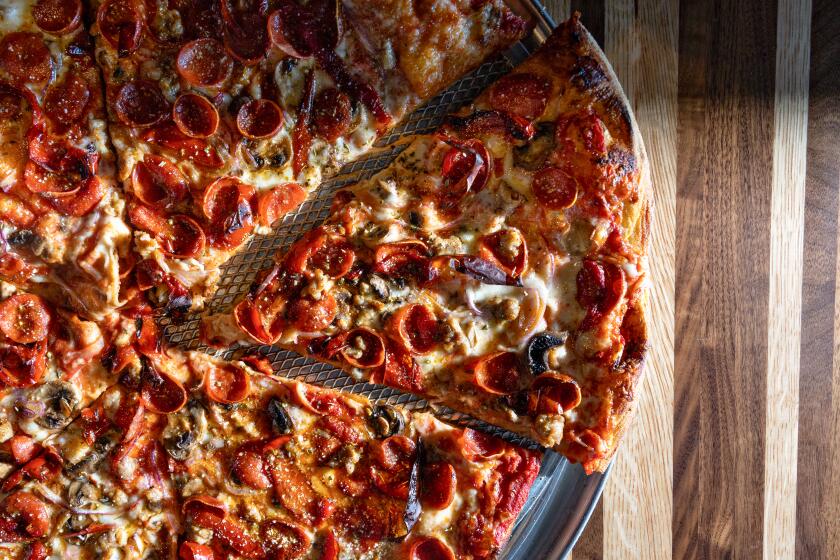One of L.A.’s best pizza chefs has set out to perfect focaccia
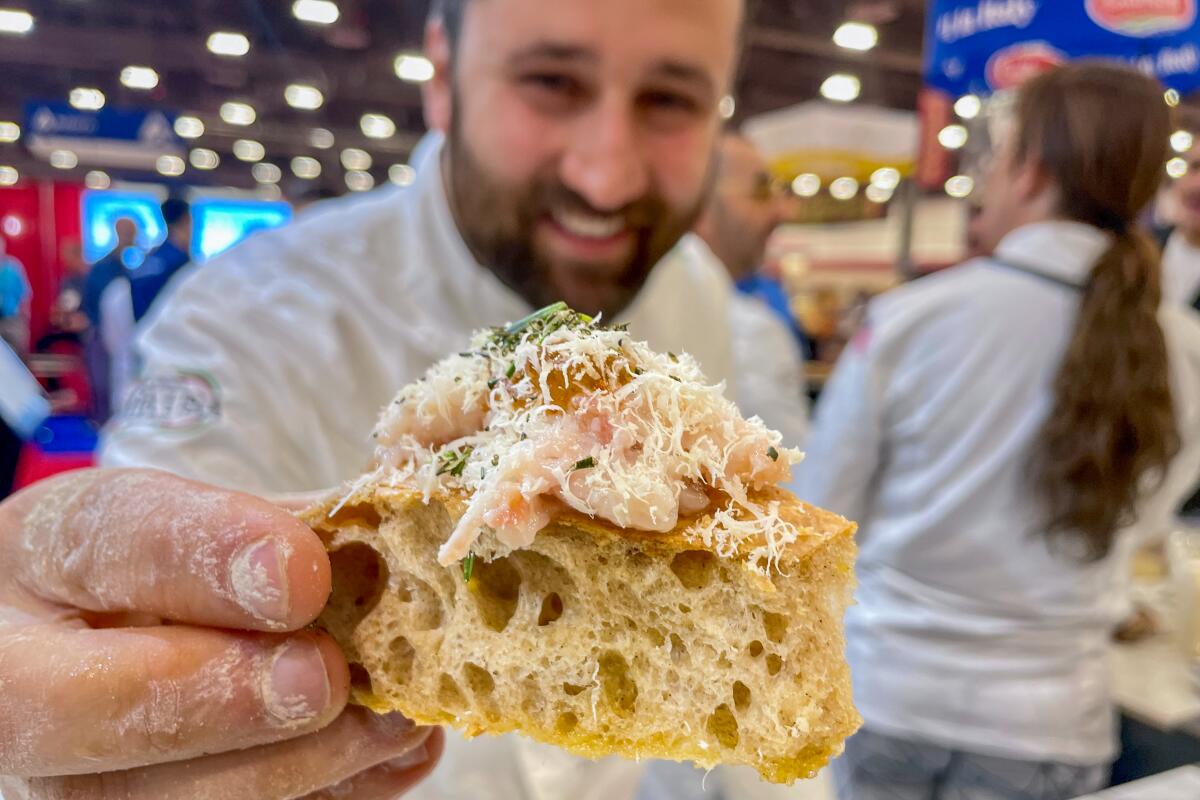
When Daniele Uditi was 9 years old, he remembers hearing voices at 4 a.m. He was in his childhood home in Caserta, Italy, and had just woken up to get a glass of water.
He walked around the house, trying to pinpoint the source of the sounds. He eventually found his family awake, chatting and laughing in the basement downstairs. Like many families in the Campania region, his auntie had an oven in the basement, where she made bread.
Review: Jonathan Gold willingly waits in line for hours at Pizzana, where Neapolitan pizza goes L.A.
Pizza, as every New Yorker is fond of telling you, is the food of the people; cheap, tasty sustenance sold by the slice.
“I used to wake up and see all my family having fun mixing the dough by hand in a wooden bin,” Uditi says. “I started to stay with them and play. My slime was water and flour. I got addicted.”
Uditi is behind the Pizzana restaurants in Southern California and Texas. He’s developed a loyal fan base for his excellent, inventive takes on Neapolitan-style pizzas. His cacio e pepe pizza, piped with strips of Parmesan cream and crowded with cracked black pepper, is admired by diners worldwide and often imitated. Now, he’s looking to make a version of the focaccia bread his auntie made in his family’s basement. And what better way to test a recipe than to make it for thousands of pizza enthusiasts?
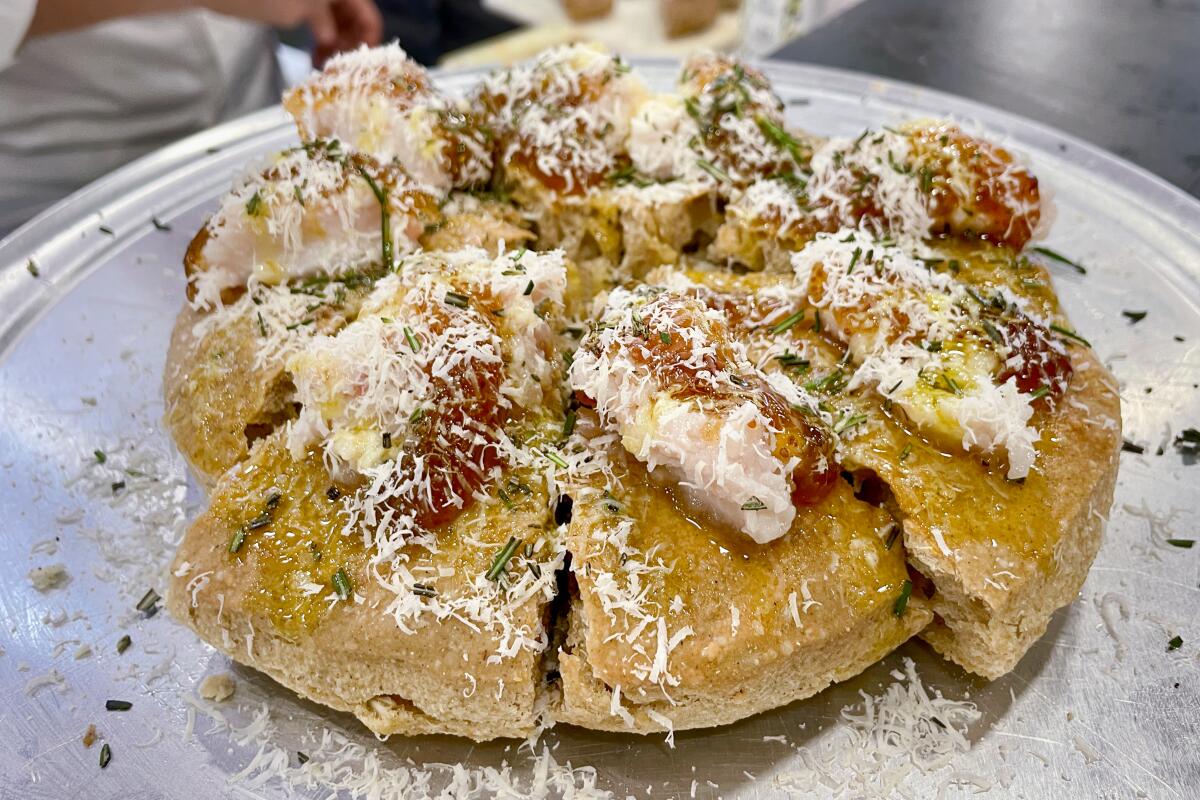
I met up with Uditi last week at the 40th annual International Pizza Expo, a three-day pizza convention in Las Vegas. Vendors, pizza chefs, restaurant operators and pizza lovers from all over the world gather for three days of pizza competitions and plenty of pizza. Uditi is there with Rega, an Italian import company that supplies many of the ingredients he uses at his restaurants.
He’s testing three breads for a planned L.A. restaurant that focuses on focaccia. The first is focaccia nel ruoto, a round bread stretched in olive oil, submerged in more oil and cooked in a pan. It’s a darker bread, more wet sand than golden, made with a multicereal flour that includes sesame, rye, oat and barley.
“I’m collaborating with Molino Casillo, who are making the flour for me that’s barely sifted and very dark,” he says.
It’s a golden era for pizza in Los Angeles. Critic Bill Addison names his favorites across New York, Chicago, Detroit, Neapolitan and hybrid-style pies.
The crust is fragile and crisp, fried in the oil in the pan until it mimics the exterior of a good doughnut. In the middle, the dough springs back with an airy crumb. There’s an almost licorice taste, with a rich, slightly sweet and nutty intensity to the dough. This is not your pandemic focaccia.
He tops the bread with a whipped prosciutto crudo, utilizing the often-discarded fat trimmings. It’s a decadent meat butter that melts into the warm bread. On top is a dollop of sweet fig jam and shavings of Manuel Lombardi Conciato Romano, or what many refer to as the oldest variety of cheese in the world. The sharply flavored cheese is fermented in vases with wine and herbs giving it the fierce aroma of feet, or what all the best, most pungent foods should smell like.
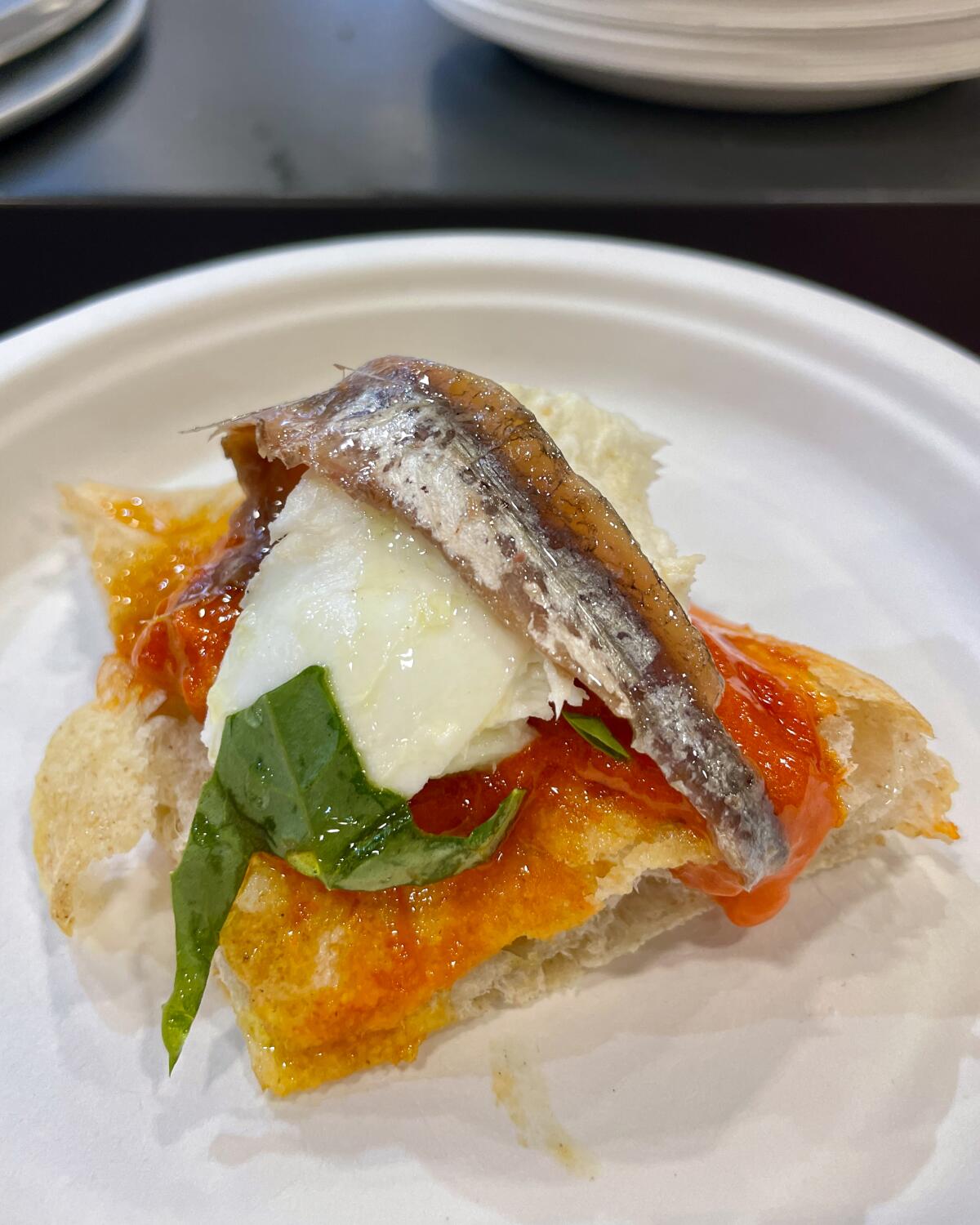
A crowd forms around the booth with people eager to taste Uditi’s new creation. He’s bombarded with questions.
“Why is the dough so dark?”
“How did you get that texture on the crust?”
“Exactly how long is your proof?”
He generously answers them all.
His spianata focaccia is a long, stretched dough made with multigrain flour. The crackle of the crunch on the crust is audible, giving way to a center that’s slightly chewy but mostly air.
“These long focaccia are the precursor of pizza,” he says. “Pizza comes from focaccia. It’s basically flat bread.”
As soon as the spianata focaccia emerges from the oven, the wide, bubbly surface is thickly laden with hand-crushed San Marzano tomatoes and crema di nduja, a spicy meat paste he makes himself. Then he layers on slices of Latteria Sorrentina mozzarella di bufala. It has a milky fermented tang Uditi wouldn’t dream of ruining by baking the cheese. He drapes anchovies over the top, then showers the pizza with fresh basil and drizzles it with some Muraglia olive oil.
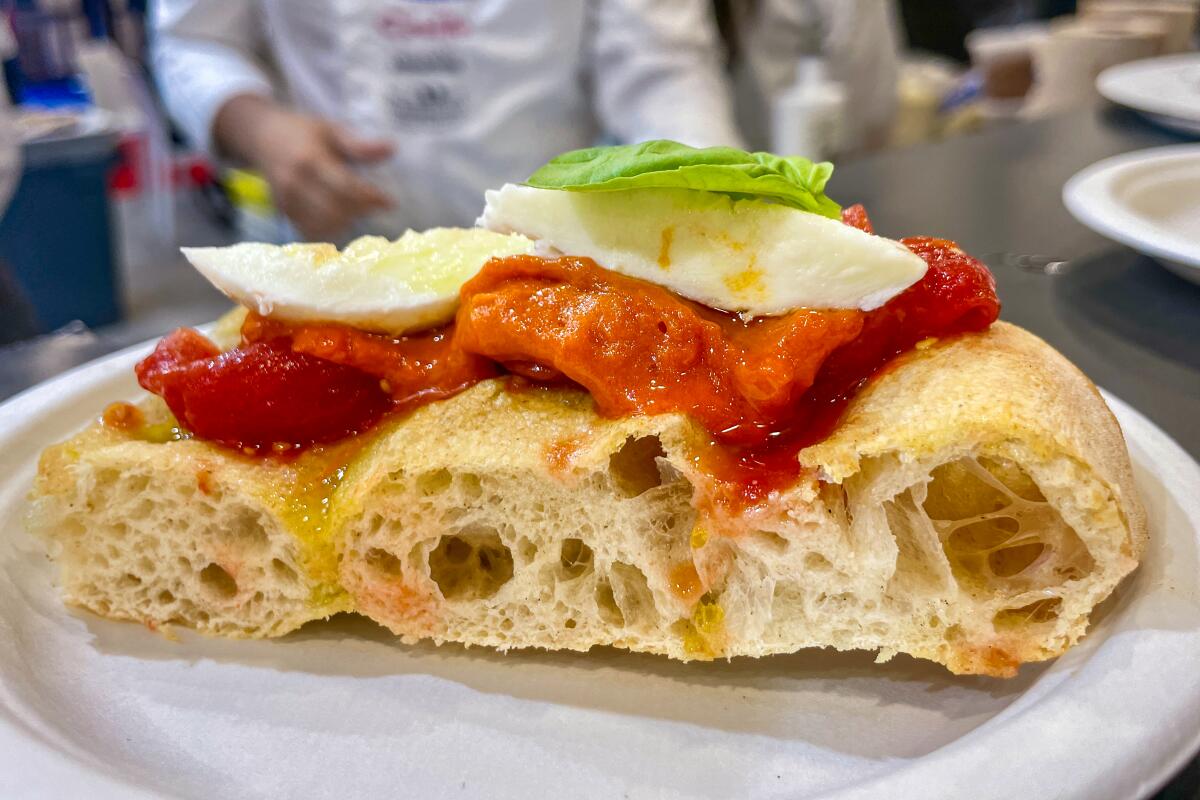
“We also used to make friselle, twice-baked dough, to preserve the bread in the long run,” he says. “But before we did the second bake, we used to use some for breakfast because we wanted it softer. We put mortadella inside. Just warm bread with mortadella and cheese.”
That childhood breakfast is the basis for his spianata focaccia with mortadella. He splits the bread while it’s still steaming, the heat intensifying the meaty funk of the mortadella and just melting the stracchino cheese. It’s incredibly simple and has all the makings of a great Italian sandwich.
“A lot of people are focusing on like the cheese pull and all those Instagram things,” he says. “I’m kind of tired of that. I want ingredients and things that are made the way I used to eat them when I was a kid.”
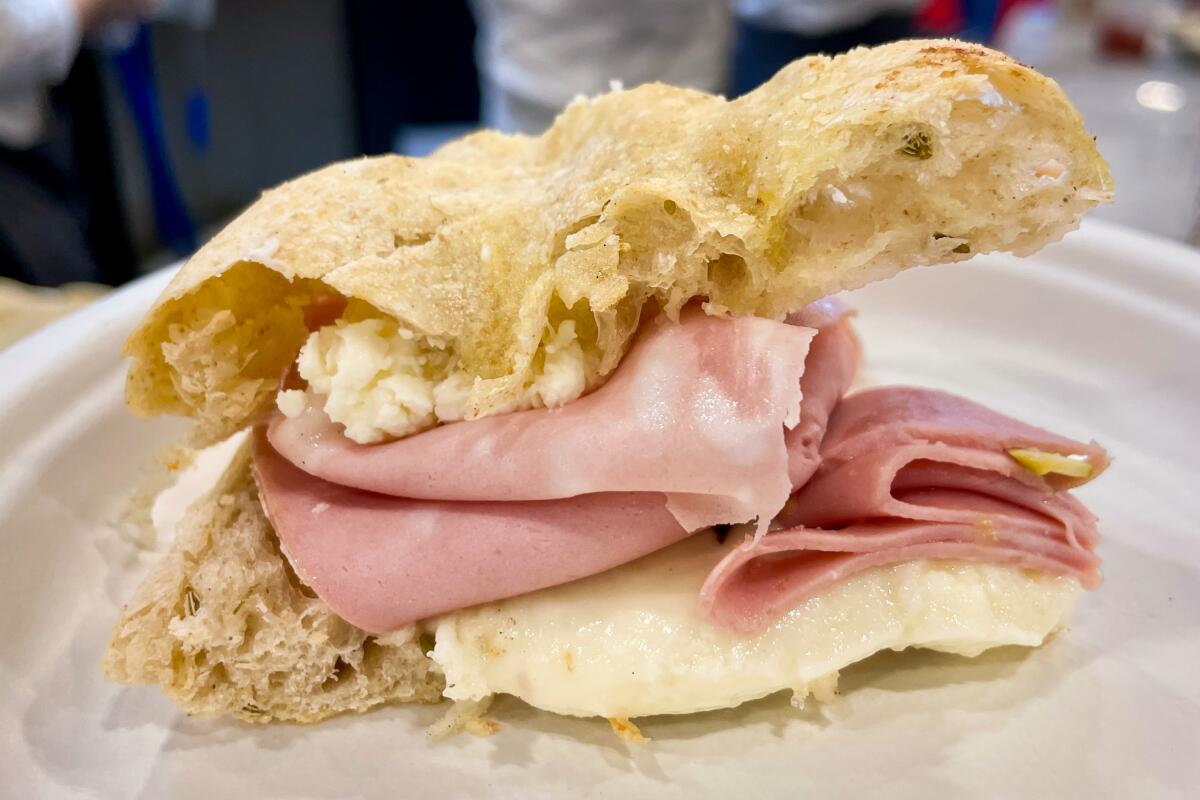
Some of those ingredients include Tomatoes Agriconserve Rega by Luigi Rega, a jar of piennolo tomatoes that hang on the vine for a year and taste like candy.
Uditi plans to introduce the focaccia during planned pop-ups and eventually open a dedicated focacceria.
“I want to give people a mental connection with the focaccia because I’m tired of hearing people say something was better in Italy,” he says. “When you’re on the Amalfi Coast and you open up the window and you have the Gulf of Naples there, even a crappy plate of pasta tastes beautiful. How do I make up for that? Of course my beautiful accent and these amazing ingredients.”
More to Read
Eat your way across L.A.
Get our weekly Tasting Notes newsletter for reviews, news and more.
You may occasionally receive promotional content from the Los Angeles Times.
